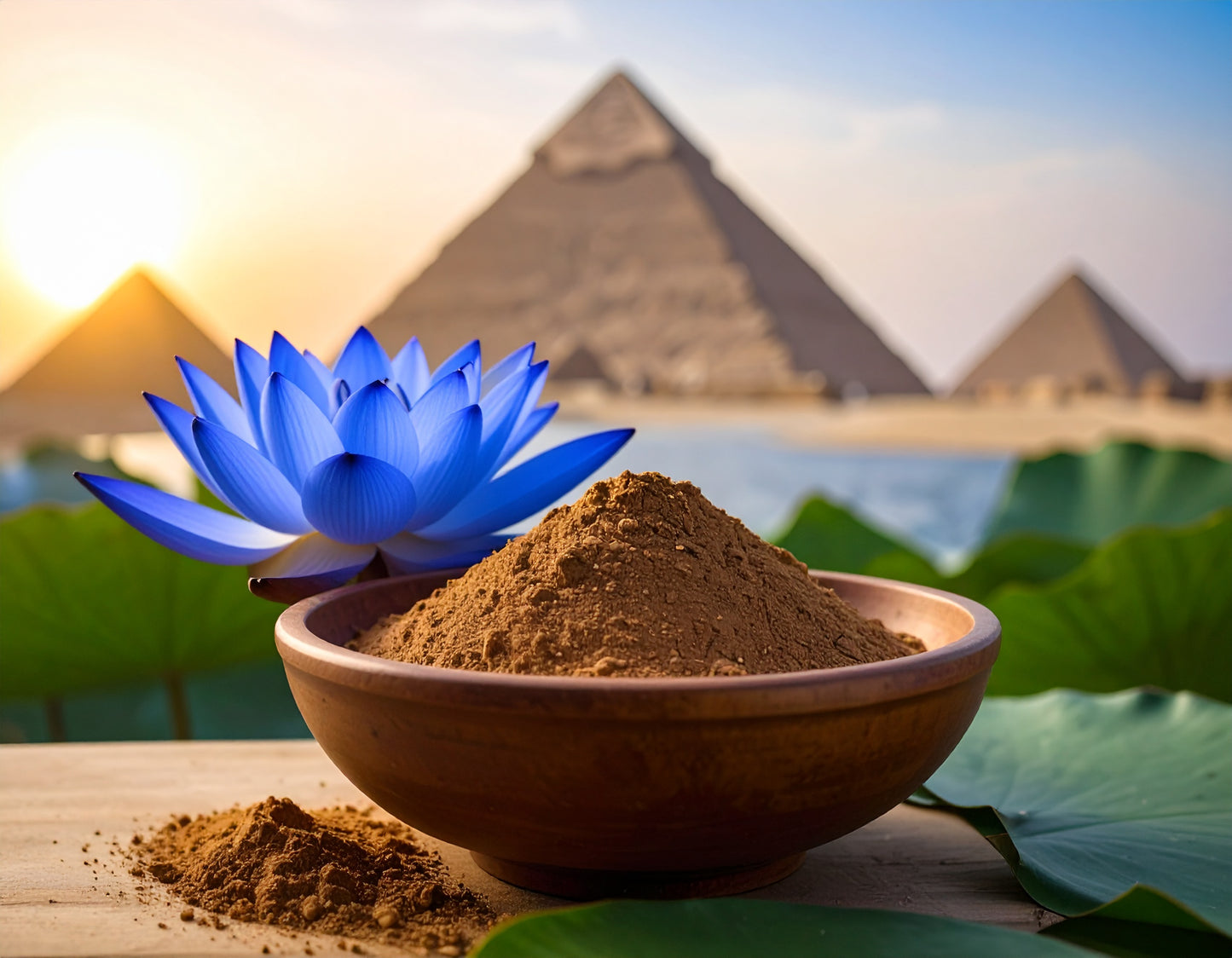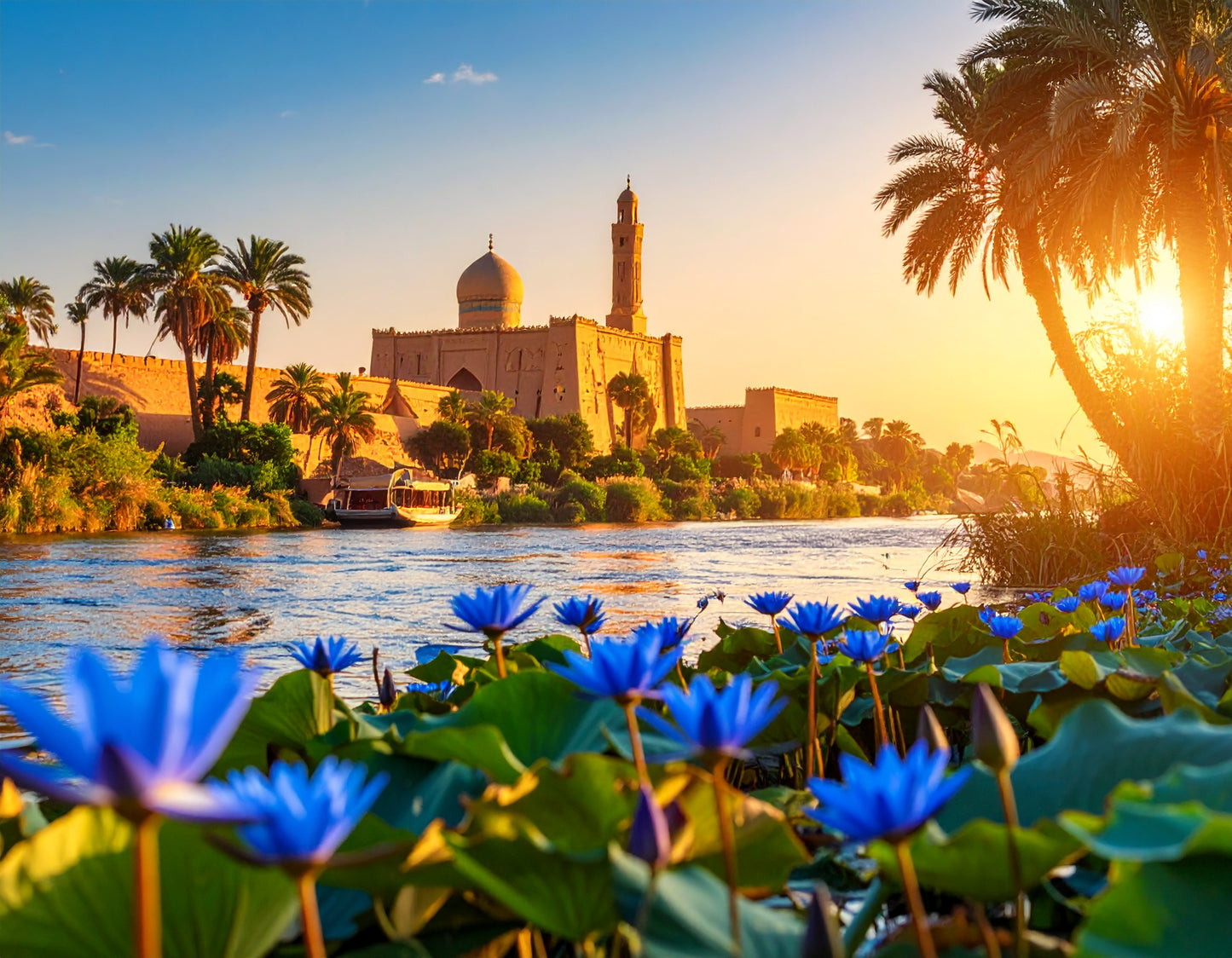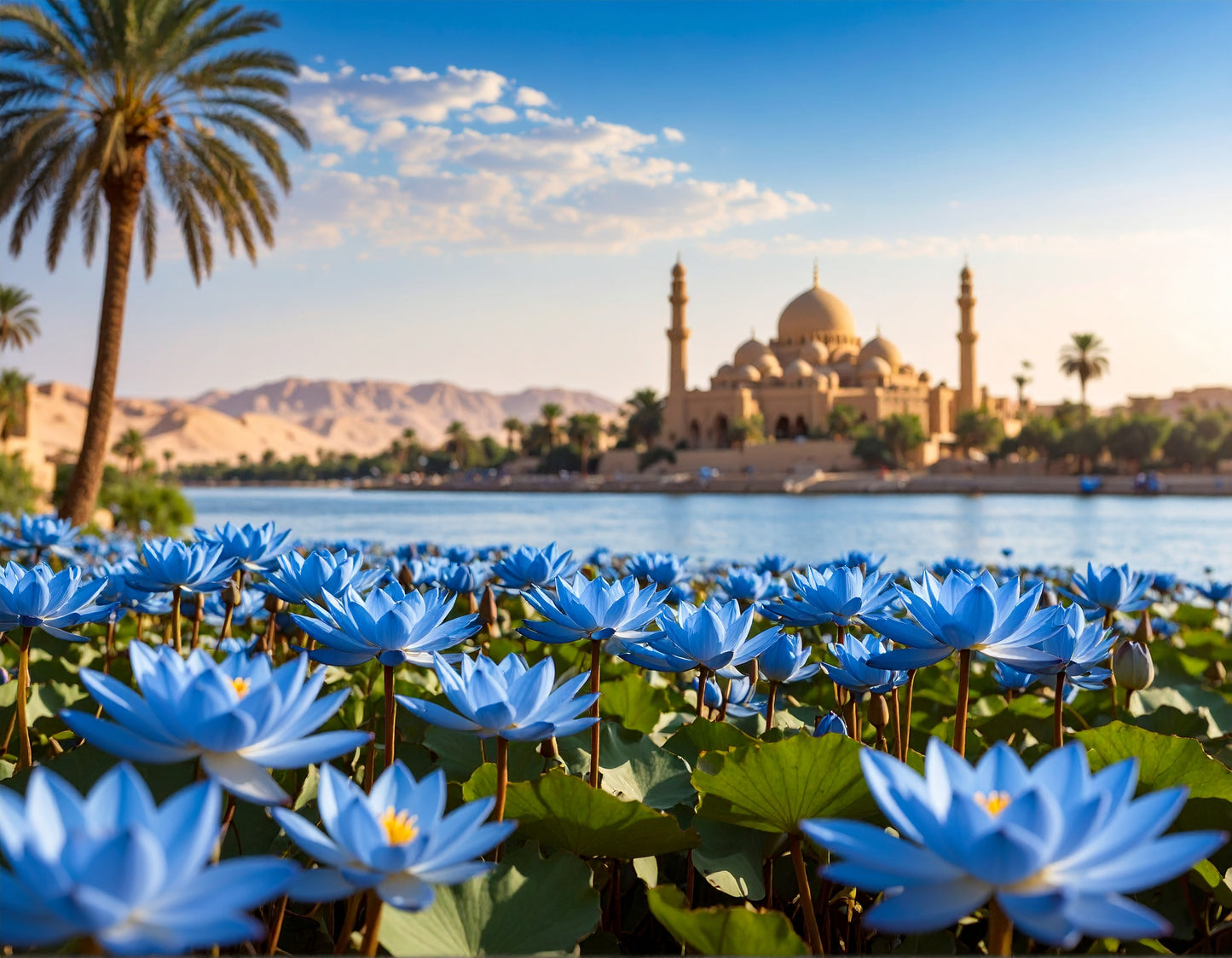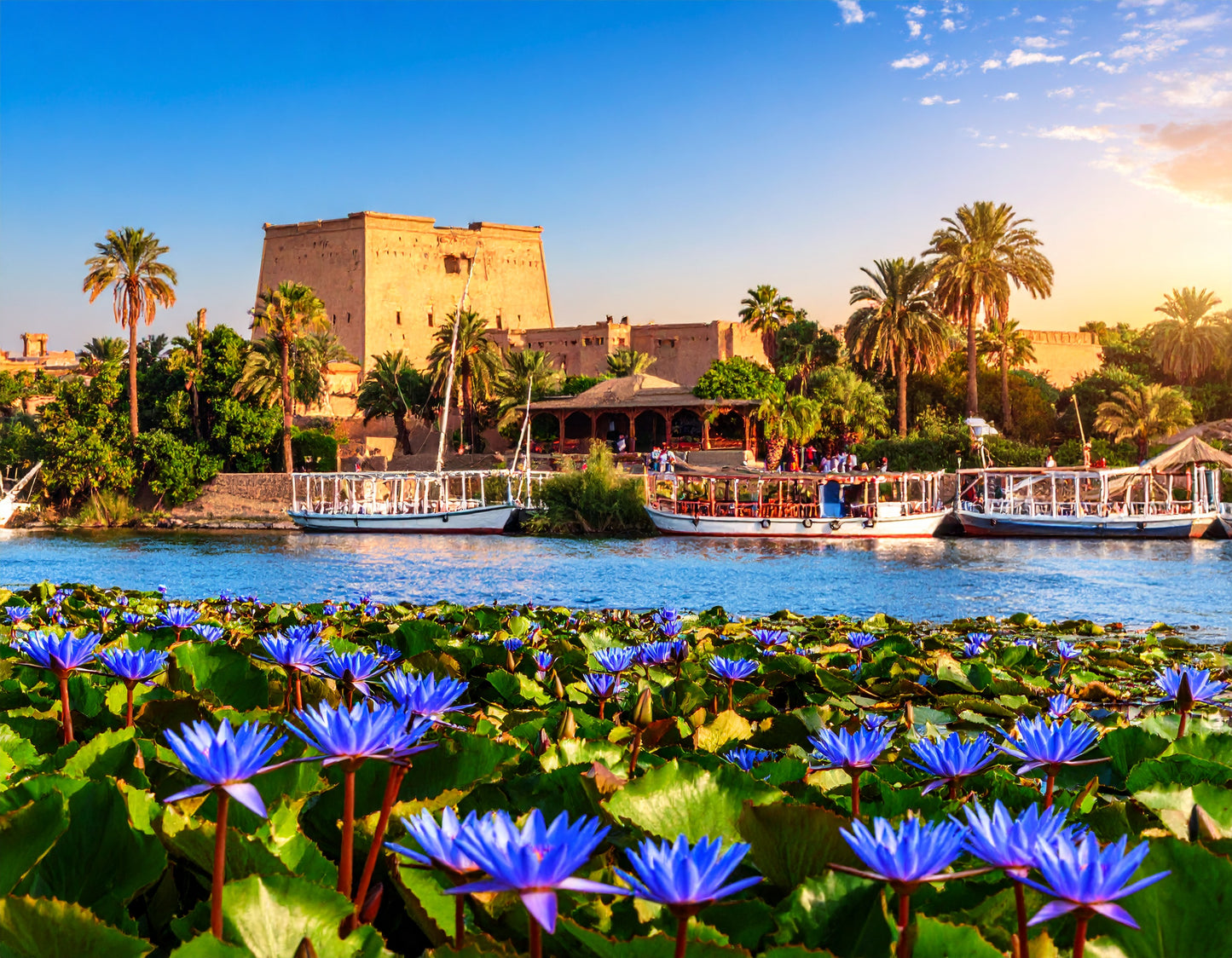Botanical Sage
40:1 POWDERED EXTRACT BLUE LOTUS EXTRACT( Nymphaea Caerulea )
40:1 POWDERED EXTRACT BLUE LOTUS EXTRACT( Nymphaea Caerulea )
Couldn't load pickup availability
Blue Lotus
The story of Blue Lotus—a mesmerizing water lily known as Nymphaea caerulea—begins on the banks of the Nile and echoes through the mythic, religious, and healing traditions of ancient Egypt. This radiant deep-blue flower opens with the sunrise and closes at dusk, mirroring the journey of the sun—a pattern that deeply impressed the people of the Nile valley. ancient origins
Sacred Symbolism and Myth
To the Egyptians, Blue Lotus symbolized the cycle of life, death, and rebirth. The flower was especially sacred to the sun god Ra, and ancient creation myths describe the sun god first emerging from a blooming blue lotus on the primordial waters at dawn, bringing light to the universe. It also represented immortality; the Blue Lotus was believed to offer a spiritual connection to the afterlife and facilitate communication with the divine, as referenced in the Egyptian Book of the Dead. ancient origins
Blue Lotus was immortalized in art and ritual, from temple walls to jewelry, perfume, and amulets. It is often shown clasped in the hands of gods, pharaohs, and priests, signifying beauty, purity, and transcendence. Deities such as Nefertem—the god of healing, beauty, and perfumes—were said to have emerged from the Blue Lotus, embodying both its rejuvenating scent and its restorative powers. Kona cloud forest
Ritual and Ceremony
Blue Lotus was central to religious and funerary rituals. Priests, royalty, and initiates drank wines or prepared infusions of Blue Lotus for purification rites, ceremonies, and gatherings thought to involve trance or mild euphoria. Its psychoactive constituents—nuciferine and aporphine—brought about a relaxed, expansive state and were believed to enhance spiritual connection, insight, and sensuality. ancient origins
Healing and Tradition
The Egyptians admired Blue Lotus not only for its beauty and aroma but also for its medicinal properties. It was used as a remedy for anxiety, insomnia, pain, and for promoting circulation and overall wellness. Blue Lotus’s calming properties made it a symbol of serenity as well as vitality. Kona cloud forest
Beyond Egypt
Blue Lotus folklore extended far beyond Egypt. The flower was also revered in Buddhist and Hindu traditions, where it became a powerful image of enlightenment, wisdom, and the soul’s rise from earthly troubles. In both Asia and the Mediterranean world, it is found in religious motifs, sacred art, and myths celebrating creation and purity. acslab
Legacy
Today, Blue Lotus remains a botanical icon—both entrancing and mysterious. Its ancient story weaves together myth, medicine, and ritual, standing as a symbol of renewal, transcendence, and the enduring quest for spiritual connection.
Share








